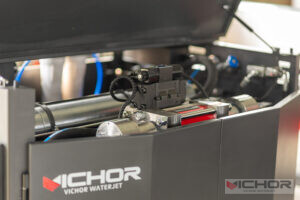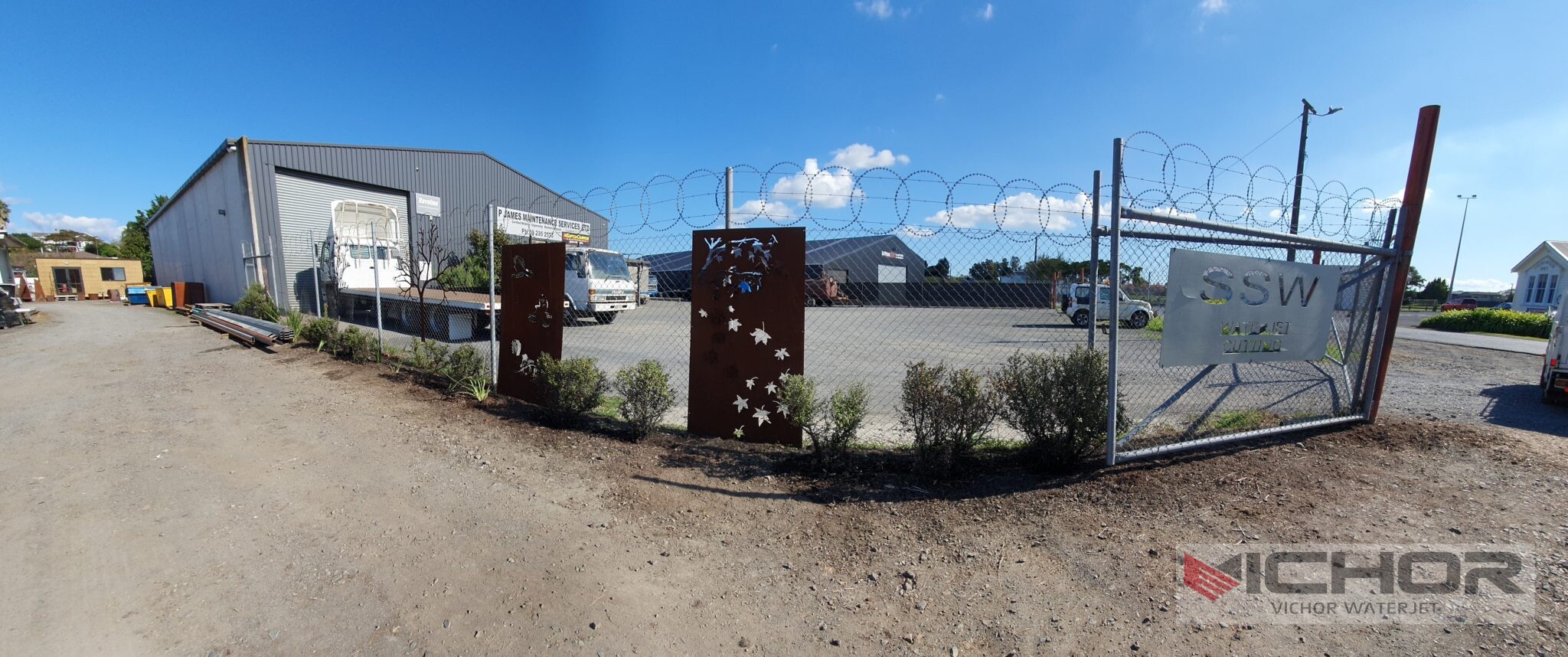
7 Reasons a Water Jet Wood Cutting Machine Transforms Your Workshop
Imagine slicing through a thick, seasoned oak plank with the precision of a surgeon’s scalpel, leaving behind edges as smooth as polished glass, with not a single splinter or whiff of burnt sawdust in the air. This isn’t a scene from a futuristic film; it’s the daily reality for craftsmen and manufacturers who have embraced the power of a water jet wood cutting machine. Moving beyond the limitations of blades and lasers, this technology is redefining the boundaries of woodworking. If you’re still relying on traditional tools, you might be missing out on unparalleled accuracy, versatility, and efficiency. Let’s dive into the seven key ways this innovative equipment can revolutionize your projects.
The Unmatched Precision of a Water Jet Wood Cutting Machine
At the heart of every water jet wood cutting machine is a process of incredible accuracy. A high-pressure pump, often intensifier-based, forces water through a tiny orifice, typically made of sapphire or diamond. This creates a supersonic stream moving at speeds over twice the speed of sound. When abrasive garnet is added to this stream, it becomes a potent cutting tool capable of slicing through virtually any material. For wood, this translates to tolerances that can be held within a few thousandths of an inch. Whether you’re creating intricate inlays, detailed marquetry, or complex architectural models, the water jet wood cutting machine follows the digital design file with absolute fidelity, eliminating the risk of human error associated with manual routing or sawing.
The “Cold Cutting” Advantage: No Heat-Affected Zones
This is arguably the most significant benefit over laser or plasma cutting. A laser cutter uses intense heat to vaporize material, which inevitably creates a Heat-Affected Zone (HAZ) along the cut edge. For wood, this means charring, burning, and a weakening of the material’s structural integrity. A water jet wood cutting machine is a cold-cutting process. The water stream dissipates heat almost instantly, leaving the wood’s natural properties completely unchanged. There is no burning, no discoloration, and no release of hazardous fumes. The result is a pristine, clean edge that requires little to no post-processing, saving you time and preserving the natural beauty of the wood.
Mastering Complexity and Intricate Designs
Traditional saws and routers struggle with sharp internal corners and highly complex patterns. A blade has a physical width (kerf) and cannot make perfect 90-degree turns. In contrast, the stream from a water jet wood cutting machine is remarkably thin, allowing it to navigate the most intricate geometries with ease. It can produce sharp corners, delicate filigree, and complex curves that would be impossible or prohibitively expensive with other methods. This makes it the ideal tool for creating custom furniture with ornate designs, decorative panels, intricate puzzles, and artistic sculptures from wood.
Versatility Beyond Just Wood: A True Multi-Material Tool
While our focus is on wood, the versatility of a water jet wood cutting machine cannot be overstated. This single machine can seamlessly switch from cutting a delicate piece of balsawood to slicing through marble, granite, stainless steel, rubber, or composites. For a workshop or fabrication facility, this eliminates the need for multiple dedicated cutting machines. You can create a project that combines materials—for instance, cutting a perfect wooden inlay for a stone tabletop or creating a metal reinforcement bracket that fits exactly into a wooden structural component. The ability to handle such a diverse range of materials makes it an incredibly cost-effective and space-saving solution.
Minimizing Waste and Maximizing Material Yield
Efficiency in material usage directly impacts your bottom line. The narrow kerf of the water jet stream significantly reduces material waste compared to wider saw blades. Furthermore, with advanced nesting software, parts can be arranged on a sheet of wood in the most optimal layout, akin to a digital jigsaw puzzle. This software minimizes the unused space between parts, ensuring you get the maximum number of components from a single sheet. For expensive hardwoods or engineered wood products, this efficient use of material can lead to substantial cost savings and a more sustainable operation.

Superior Edge Quality and the Reduction of Post-Processing
The finish left by a water jet wood cutting machine is often superior to that of many mechanical methods. The cutting action produces a smooth, satin-like matte finish on the edge of the wood. While there can be a slight taper (wider at the top than the bottom) on very thick materials, this is generally minimal and often acceptable for many applications without any further work. This contrasts sharply with the rough, splintered edges often left by saws, which require extensive sanding or routing to clean up. The reduction, and in many cases elimination, of post-processing steps drastically shortens production time and lowers labor costs.
Integrating with Modern Digital Workflows
A water jet wood cutting machine is a cornerstone of modern digital fabrication. It operates directly from CAD (Computer-Aided Design) and CAM (Computer-Aided Manufacturing) files. This seamless integration allows for rapid prototyping and repeatable production. A design can be created on a computer and sent to the machine for immediate cutting, enabling quick iterations and adjustments. This digital thread ensures that the tenth piece is identical to the first, guaranteeing consistent quality across small or large production runs. It bridges the gap between digital design and physical creation with impeccable accuracy.
Frequently Asked Questions (FAQ)
Q1: Does a water jet wood cutting machine make the wood wet?
A1: This is a common concern. While the cutting process uses water, the exposure is extremely brief and localized. The stream is very fine and moves at such a high velocity that it does not saturate the wood. For most materials, any minor dampness on the cut edge dries almost instantly or within a few hours without causing any warping, swelling, or damage to the wood’s integrity.
Q2: How thick of a piece of wood can a water jet effectively cut?
A2: A standard water jet wood cutting machine is capable of cutting wood up to 6 inches (150 mm) thick, and high-powered systems can handle even greater depths. The primary consideration for thicker materials is a slight increase in cutting time and a minimal taper on the edge, which can be managed with advanced cutting head controls.
Q3: Is the cutting speed of a water jet competitive with traditional saws?
A3: For straight-line cutting on simple shapes, a high-speed panel saw may be faster. However, for complex contours, intricate designs, and especially for nests of multiple parts, the water jet wood cutting machine is often faster overall. This is because it combines the cutting, detailing, and drilling processes into a single, uninterrupted operation, eliminating the need for multiple tool changes and setups.
Q4: Can a water jet cutter be used on all types of wood, including plywood and MDF?
A4: Absolutely. A water jet wood cutting machine handles all wood varieties exceptionally well. It cleanly cuts through solid hardwoods and softwoods, as well as engineered wood products like plywood, MDF, particleboard, and OSB. The cold-cutting process is particularly beneficial for materials like MDF, which are prone to burning and releasing unpleasant fumes when cut with a laser.
Q5: What is the primary maintenance requirement for a water jet wood cutting machine?
A5: The most consistent maintenance task involves replacing the consumable parts that are subject to wear. This includes the high-pressure pump seals, the orifice (usually made of sapphire or diamond), and the mixing tube (also known as the focusing tube). The abrasive garnet also needs to be replenished regularly. While the initial investment and maintenance require consideration, the payoff in precision, versatility, and reduced secondary processing is immense for most professional operations.
continue reading
Related Posts
- 1696 words8.5 min read
- 1991 words10 min read



